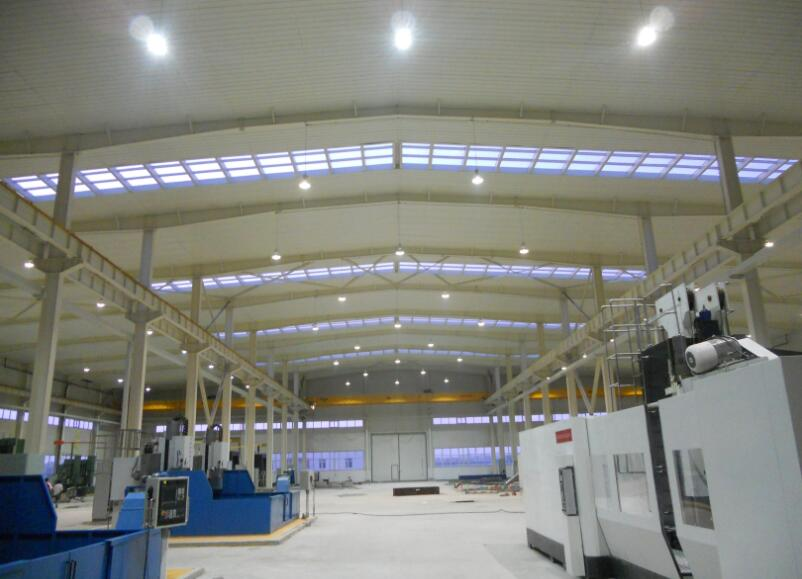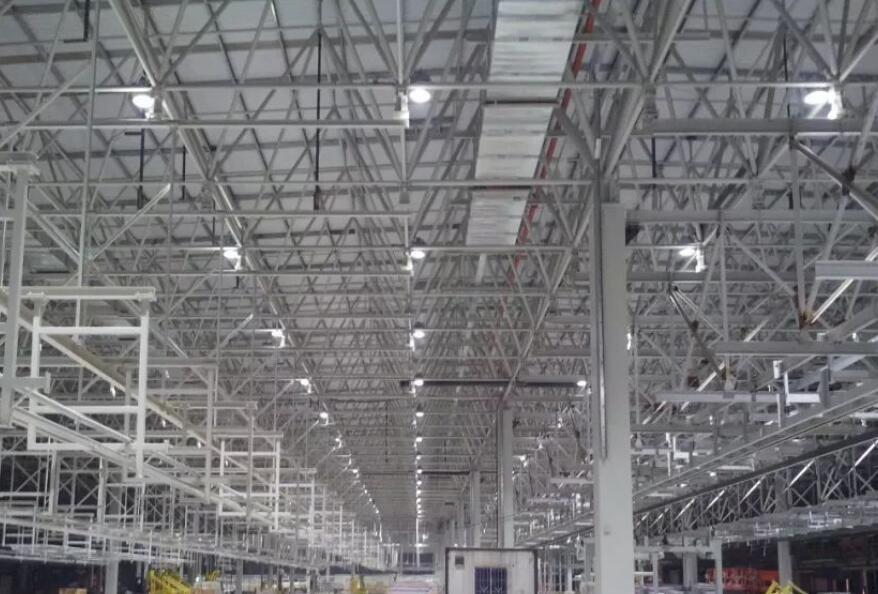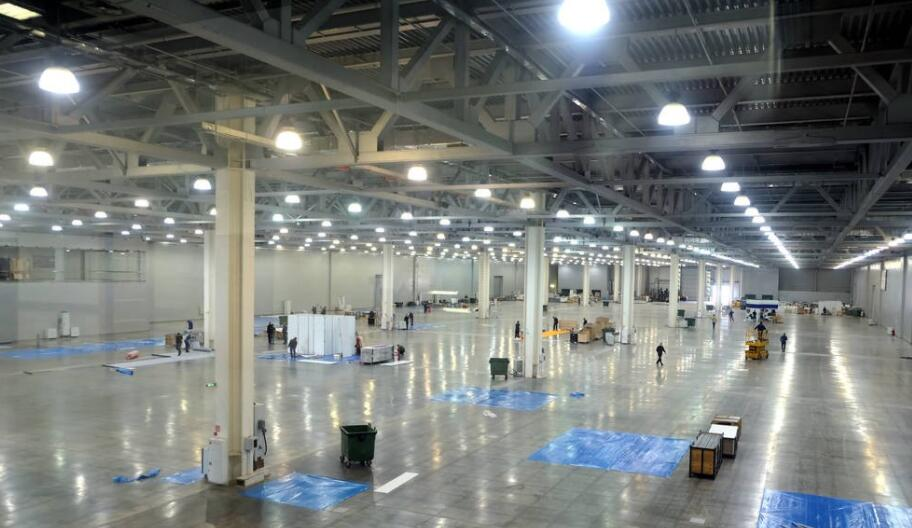First-line industry research: future applications and development trends of industrial intelligent lighting
2021-09-30

Today, we have ushered in a historic intersection of a new round of technological revolution and industrial transformation in the world and the transformation of our country's development mode. From a global perspective, advanced technologies such as artificial intelligence, Internet of Things, big data, and cloud computing are setting off an intelligent revolution in traditional industries in the name of "Industry 4.0", and industrial lighting is gradually becoming intelligent. From a domestic perspective, my country’s economy has shifted from a stage of rapid growth to a stage of high-quality development. Digitalization has provided new momentum for traditional industries to improve production efficiency and achieve transformation and upgrading. Industrial lighting intelligent applications have ushered in a good period of historical development. After undergoing a major examination of the epidemic, factories must take the initiative to adapt to digital changes and accelerate the integration of intelligence and informatization.
The future industrial lighting will be a flexible control application based on the Internet of Things
In the “Questionnaire Survey on the Digital Application Trends of Industrial Intelligent Lighting” launched by Aladdin All Media recently, they talked about their views on the development trend of industrial lighting. The survey results showed that 69.05% of the people said that the future trend of industrial lighting Lighting on demand; 66.67% of people think it is humane, healthy and comfortable; 59.52% of people think that lighting can be adjusted according to the scene to improve production efficiency; 57.14% of people think that intelligent control is convenient for operation; 76% of people think that it is intelligent interconnection, compatible with other industrial production equipment platforms, and coordinated control; 45.24% of people think that it is integrated with factory data to realize big data management of industrial production; 42.86% of people think it is Visual management.

Topic: What is your forecast for the development trend of industrial lighting?
It can be seen that energy saving, humanization, and improvement of production efficiency are the top three factors that everyone pays attention to the development of intelligent lighting.
Application 1: The organic integration of lighting and scene requirements realizes flexible, energy-saving, wireless communication, and remote control industrial lighting applications.
Nowadays, under the wave of industry 4.0, factory production has put forward higher requirements for lighting, not just limited to simple dimming and color adjustment, and future industrial lighting will better realize factory humanization through intelligent control. The healthy light environment is a means to realize the integrated design of architecture and lighting, and to realize the comprehensive digital, intelligent upgrade and application of the manufacturing industry.
In the eyes of professionals: The development of industry 4.0 is a process towards the Internet of Everything, and in terms of industrial lighting, it is a stage of moving towards a highly intelligent all-IoT intelligent factory. Based on this, the future of industrial lighting will create a new chapter of application centered on integration, intelligence, and energy saving, realize the coordination between people and space, and the synchronization of equipment and energy saving as the starting point, and organically integrate lighting and scene requirements, thereby realizing industrial production Coordinate and efficient development.
This view coincides with Sun Zhipeng, the project management manager of the Engineering Management Department of Inner Mongolia Yili Industrial Group Co., Ltd. Sun Zhipeng believes that future lamps will be able to directly integrate wireless networking controllers, and any lamps can be freely combined, and lamps can be grouped quickly with the device layout adjustment and function adjustment, so as to achieve more flexibility, energy saving, wireless communication, and remote control. Lighting applications.
Application 2: Cross-domain integration of multiple technologies such as perception, communication, positioning, etc., to create industrial lighting applications that combine personalization, human lighting, and intelligence
At present, industrial intelligent lighting is mainly based on the combination of LED lighting and wireless control and dimming functions. International manufacturers are successively investing in the research and development of human-caused lighting and intelligent lighting systems, and connecting the intelligent control development platform to create a new combination of personalized, Human factor lighting, intelligent LED intelligent lighting application industry. Chen Kun, an engineer from the product planning department of Shenzhen Sunway Lighting Co., Ltd., said: The future applications of industrial smart lighting will integrate smart light modules, perception, wireless control, cloud and other technologies across fields, and greatly enhance the functions of LED lighting systems, except for light environments. In addition to lighting, it is also necessary to be able to combine positioning and communication technologies to create additional application value for LED lighting.
In the industrial 4.0 era, information technology will experience a technological innovation revolution, and intelligent industrial lighting, as a part of LED lighting applications, is not only the object to be transformed, but also provides a method and means for transformation. Signify (China) Asia Pacific Standards and Regulations Chief Expert Dr. Feng Huang mentioned: In the future, industrial lighting has a broad application prospect, and high-quality lighting should be provided to meet the requirements of high efficiency, energy saving, health and comfort. It can also provide individualization for industrialization 4.0. service. At the same time, it can also provide visible light communication capabilities for industrial automation through technological innovation. It is understood that the combination of an intelligent lighting control system based on visible light communication technology and lighting scenes can give full play to the technical advantages of visible light communication and provide a better method for communication in smart factories in the future.
Application 3: Digital management and control of lighting assets, realizing effective linkage between lighting systems and other industrial systems, and big data integration management are key applications of factory lighting
Digitization, intelligence, and a high degree of networking are the main characteristics of modern industrial production. In the era of Internet of Everything, the same is true for industrial lighting. In fact, digitization requires not only the digitization of products, but also the digitization of management among production processes, production data, and production factors. Therefore, digital management and control of lighting assets, ultimately realizing effective linkage between lighting systems and other industrial systems, realizing factory data integration, and realizing big data management of factory production are the key applications of factory lighting. This has reached the scope of the development of the Industrial Internet.
Professionals mentioned: If industry 4.0 is only the direction of development, then the integration of industrialization and industrialization is the work being carried out by industrial enterprises at present, which puts forward the requirements of intelligent lighting management, and in the future, the realization of intelligent lighting and industrial control systems Matching and compatibility will be a key task of the enterprise.
Sun Wenhua, deputy director of the technical department of China Automotive Industry Engineering Co., Ltd./professional senior engineer, also pointed out that future industrial smart lighting applications need to meet the needs of digital factories and smart factories, and the construction of the system needs to be incorporated into the standard system of digital factories and smart factories to meet Digital requirements for operation management.
From specialization to popularization, industrial lighting intelligent control methods are more diversified.
After more than ten years of development, industrial intelligent lighting has gradually moved from specialization to popularization. Intelligent control methods are becoming more and more diversified.
In a survey conducted by Aladdin All Media, it is found that most people prefer wireless control when choosing industrial lighting control mode—Zigbee/WiFi/Bluetooth, accounting for 48.15%; 37.04% of people choose DMX512 protocol; 33.33% of people chose DALI protocol; in addition, 18.52% of people chose traditional analog dimming.
Topic: Which industrial lighting intelligent control methods are you more inclined to choose?
Just as Ren Xiang, deputy general manager of MEAN WELL (Guangzhou) Electronics Co., Ltd., mentioned in an interview with Aladdin's media reporter: Digital control protocol has become the mainstream intelligent control method today. In the future, as companies enter the game, they will move to industry. In the smart lighting market segment, digital applications will become more and more extensive in the future.





